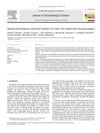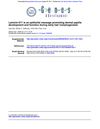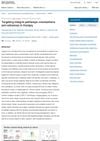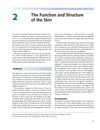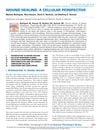Re-Investigating the Basement Membrane Zone of Psoriatic Epidermal Lesions: Is Laminin-511 a New Player in Psoriasis Pathogenesis?
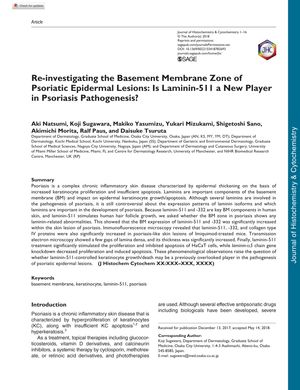
TLDR Laminin-511 may contribute to psoriasis by affecting skin cell growth and survival.
The study investigated the role of laminin-511 in the pathogenesis of psoriasis, a chronic inflammatory skin disease. Researchers found that the expression of laminin-511 and -332 was significantly increased in the basement membrane (BM) of psoriatic skin lesions. Using immunofluorescence microscopy and transmission electron microscopy, they observed that laminin-511, -332, and collagen type IV proteins were significantly increased in psoriasis-like lesions in mice treated with Imiquimod, and the thickness of the lamina densa was also significantly increased. Additionally, treatment with laminin-511 stimulated proliferation and inhibited apoptosis in HaCaT cells, a human keratinocyte cell line, while knockdown of the laminin-α5 chain gene had the opposite effect. These findings suggest that laminin-511 may play a previously unrecognized role in the development of psoriatic epidermal lesions by affecting keratinocyte growth and death.
